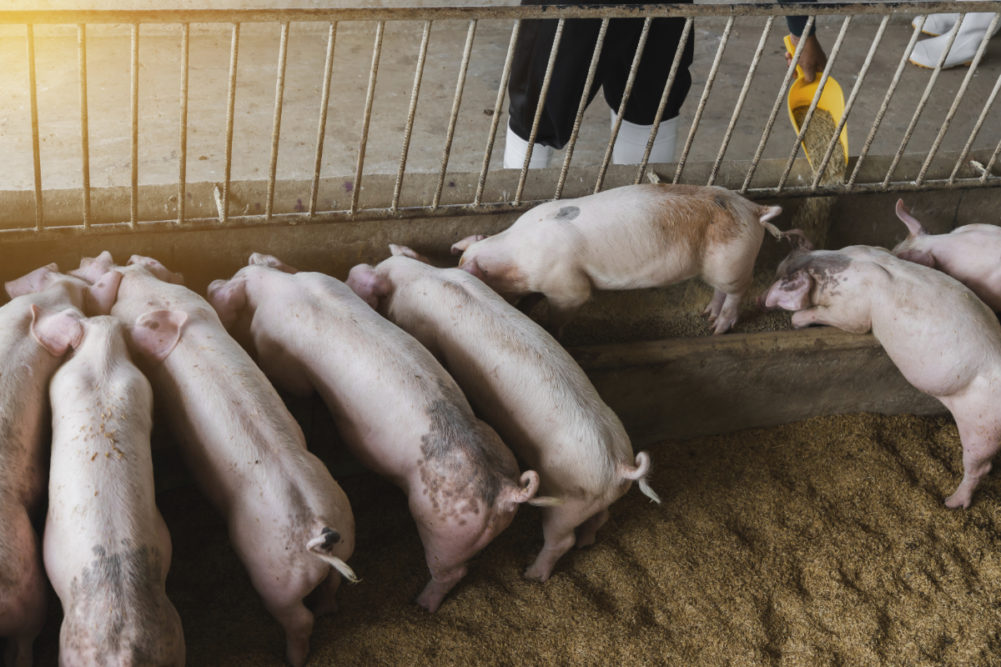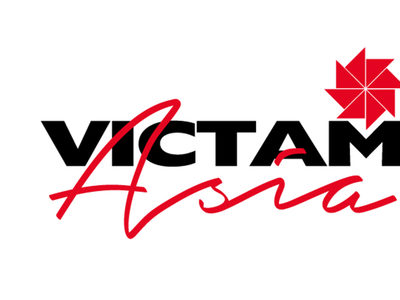BRUSSELS, BELGIUM – Caught between the hammer of skyrocketing production costs and an anvil of limited purchasing power of customers, European feed producers are looking to the second half of 2022 with great concern. The European Union (EU) pig and poultry sectors are expected to reduce their activities in 2022 due to the high cost of feed materials, lower market demand and expanding avian influenza (AI) outbreaks in several countries, the European feed industry federation FEFAC said in May.
EU compound feed production in 2021 was estimated at 150.2 million tonnes, an increase of 0.03% compared with the previous year and achieved despite the continuing COVID-19 pandemic, soaring grain prices, supply chain disruptions and the spread of animal diseases, FEFAC said, adding that the new wave of animal diseases and new spike of grain prices fueled by the Russian invasion of Ukraine was expected to reduce compound feed demand in the EU by 4 million to 5 million tonnes in 2022.
Due to all of these factors, FEFAC forecasts production declines of 4.2% for pig feed, 3% for poultry feed, and 1.6% for cattle feed. All in all, this year’s feed production in the EU is set to drop by 2.9% compared to 2021, or 4.3 million tonnes.
“The immediate loss of feed maize, sunflower meal and other feed materials from Ukraine and Russia could only be partially compensated by increased feed imports, mainly from the US and Canada,” FEFAC said.
This year, the feed business is braced for a huge impact, said Zoltan Pulay, purchasing director of UBM Feed Ltd., a member of the Hungarian Grain and Feed Association, and vice president of FEFAC, adding that the current crisis is more than just about grain.
“Soaring commodity prices, not only of grains but of oil meals, freight, trace minerals, energy and so on, have immensely increased our premix and feed formulation costs,” Pulay said, adding that feed producers are still relying on the carry-out stocks but they are running low, and there is no hope for a seasonal drop in commodity prices.
“The old pattern that new crop brings (price) relief is over,” he added. “The question is to what extent livestock prices will follow this trend?”
The problem already has been recognized by several livestock associations in Europe. Stefan Chrzanowski, director of the Polish poultry producing association, Poldrób, told the local press in May that the situation in the industry was so tense that it was no longer about high prices, but about feedstuff availability.
The world production of major cereals is expected to decline in 2022 for the first time in four years, while global utilization is also seen down for the first time in 20 years, the Food and Agriculture Organization (FAO) said in its recent Food Outlook. The use of cereals for direct food consumption by humans is not anticipated to be impacted, as the decline in total use is expected to result from lower feed use of wheat, coarse grains and rice, the FAO added.
World leaders seem to worry primarily about food grains, but they also should turn their sights on the feedstuffs, which also serve as a basis of the food market, said Andrij Jarmak, an economist at the FAO.
“Ukraine exports much more feed than food grain,” Jarmak said. “And in fact, it is impossible to replace Ukraine in this market.”
He added that the current market conditions may provoke a sharp drop in livestock population not only in Europe but also in other markets dependent on Ukrainian grain.
“By the end of 2022, meat prices will be cosmic in some countries,” Jarmak said.
There are signs that these processes already have begun. In March 2022, Reuters reported that farmers in Southern Europe considered massively slaughtering their herds due to a lack of feed. Several Italian companies also voiced strong concerns over feed availability.
“The war in Ukraine cuts feed rations of cows, pigs and chickens by up to 10% at Italian farms that face the worst food crisis since the end of the Second World War,” the Italian agricultural company Coldiretti said.
Over the past decade, Italian corn production dropped by a third and many wheat fields were also lost, since the incentives to grow these crops in Italy were rather low. Now, the country’s farmers must pay a high price, Coldiretti admitted.
In Ireland, the average pig farmer has lost €206,000 in the first four months of 2022 due to skyrocketing feed prices. Some farmers already have begun culling their stock in a bid to mitigate bigger losses, Irish consultancy Teagasc estimated.
Pig feed prices rose by €50 per tonne in April to a composite €449 per tonne, Teagasc said, adding that a further hike of around €20 to €30 per tonne in pig feed costs was projected in the foreseeable future.
“While a rise in pig prices is anticipated over the coming months, pig farmers will continue to lose money,” Teagasc warned. “The Irish sow herd has already begun culling 10,000 sows, with a further 12,000 sows deemed at high risk of destocking over the coming weeks.”
Similar problems have been seen in the broiler meat and turkey segment, where producers also complained about the soaring feed costs and dwindling profitability, Teagasc added.
In France, pig farmers initiated a protest rally voicing fears of massive bankruptcies even before the Ukrainian crisis unfolded. In January 2022, a group of pig producers blocked the route nationale 12, demanding urgent state aid. The farmers claimed that they had to sell pork at a loss and that the government must urge supermarkets to agree to the price that “covers production costs.”
Pulay said some farmers in Europe already have been in a dire situation before the Ukrainian crisis, working at a loss in 2021.
“Pig industry was the most impacted,” he said.
“Ever since (early 2022), we have been seeing livestock, eggs and milk prices rising, which gave a hope for survival to many livestock farmers,” Pulay said, expressing confidence that retail food prices must follow the upward trend in order to keep livestock farmers in business. “Higher food price inflation is unavoidable.”
On the other hand, livestock producers fear raising farm-gate prices sharply, worrying about losing their customers. Skyrocketing retail prices could undermine food consumption across some countries of the European Union. A constant struggle for the best offers creates fierce price competition in the livestock markets of some European countries.
“In Italy, there are about 2.8 million heads of milk cows,” estimated Antonio Nicolosi, general secretary of Italian dairy firm Uniarma. “The crisis could provoke a rise in prices and a drop in consumption, which would force farmers to further slaughter at least 150,000 heads of cattle.”
As explained by Pulay, what feed producers need is more grain at more affordable prices, and there are several ways this could be achieved. Under normal weather conditions, Hungary produces enough grain to not only meet the domestic demand for feed but also to export a surplus. However, over the past decade, huge investments were pumped into starch and ethanol production, so as of today more than 40% of Hungarian corn is used to produce ethanol.
“This is a huge number,” he said. “It changes trade flows.”
He said over the past few years grain exporters have had to source some grain from the neighboring markets.
Rising food and fuel costs are pushing several EU countries to freeze or lower 2022-23 low-carbon blending mandates for transportation fuels. However, European fuel ethanol demand in 2022 is expected to rise 10% to 6.49 billion liters, while production will increase 4% to 6.016 billion liters, research conducted by S&P Commodity Insights showed.
Paradoxically, the current geopolitical situation only increases the demand for grain from the ethanol refineries, as the EU countries struggle to wean off the Russian oil supply by 2023. Given that the global oil prices currently hit the highest level in the past decade, ethanol producers can provide effective demand for raw materials.
“The EU’s plan to rapidly reduce dependence on Russian fossil fuels and fast forward the green transition is setting in motion higher targets over the decade and beyond,” explained Cornelius Claeys, an analyst at the global consulting firm Stratas Advisors.
However, in Central Europe, the grain shortage could be partly offset thanks to growing supplies of Ukrainian corn by train. Ukrainian grain is directed toward the seaports of Bulgaria and Romania, but some quantities also tend to land on the Hungarian market.
“For the well-known reasons, Ukrainian corn can leave the country (only) via rail towards west,” Pulay said. “Although the infrastructure is way below the demand, I think this flow will play a significant role in our market. In other words, we expect lowering domestic corn prices slowly but surely.”
Still, the future holds more questions than answers for the European feed industry, especially since the EU faces a disappointing wheat harvest this year, owing to dry weather, some preliminary analytical reports suggested. Assuming the bad forecasts come true, the global grain supply could tighten even further in the coming months.






